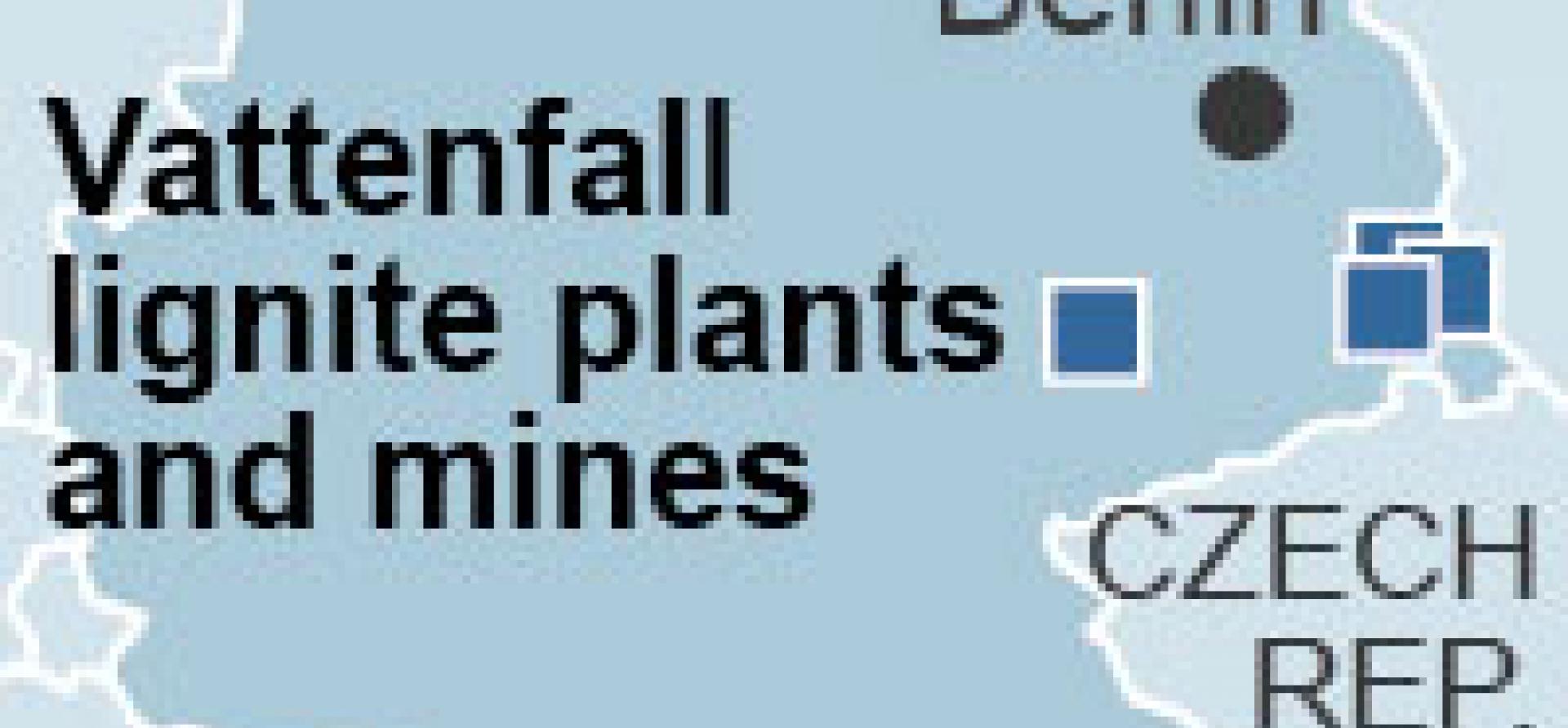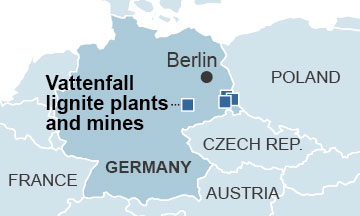In Coal Giveaway to Czech Energy Group, a Public-Relations Problem for a Swedish Utility

 Efforts by the Swedish state-owned utility Vattenfall to neatly wash its hands of its German lignite business may yet backfire.
Efforts by the Swedish state-owned utility Vattenfall to neatly wash its hands of its German lignite business may yet backfire.
At issue are Vattenfall’s coal mines and coal-burning power plants in Germany—or more specifically the disposition of those assets, which grow less appealing both financially and politically day by day with the rise of cleaner alternatives in northern Europe.
Vattenfall executives want to distance the utility entirely from the assets and create the impression that they have honorably divested from them. However, the prospective new owners, Czech energy group EPH and international finance firm PPF Investments, will aim to operate the lignite mines and coal plants for as long as possible—and out of step with Germany’s mid-term carbon-emissions targets and its unfolding electricity-generation transition, or Energiewende.
The deal in fact may do the opposite of what Vattenfall wanted, by creating an epic public-relations problem for the utility rather than a tidy way out of its German problem.
Lignite is a brown, crumbly form of coal with a high moisture content and low calorific value. It is the highest carbon-emitting source of electricity and its use in this day and age brings increasingly costly reputational risk to companies that condone it. The prospective Vattenfall sale itself shows how lignite has turned from asset to liability in Europe. The Swedish government has yet to approve the sale amid concerns that the privately held EPH lacks the level of transparency expected today of European energy companies.
Germany’s ambitious carbon-emissions targets mean lignite plants and mines within its borders have no long-term future. Any owner of such assets will have to shut them down eventually, and while Vattenfall according to its policies would have to do so sooner rather than later, EPH will aim to keep them alive longer.
The facts of the matter belie the story Vattenfall has spun.
Here’s Vattenfall Chief Executive Magnus Hall, clearly pleased with the EPH sale, in an analyst conference call in April:
“We’re very satisfied with the solution we’re presenting today. We believe it’s both strategically and financially right, strategically because it brings us in the right direction, and financially because it’s good in relation to our alternatives.”
And here’s Vattenfall Chairman Lars Norstrom underlining the rationale for the sale to EPH:
“The financial reasons are obvious, given our views on current and expected price development and market conditions. Divestment is better than any hold scenario. We see some additional (future) regulatory and financial risks, such as additional costs for re-cultivation; additional cost for restructuring; additional, maybe costly, negotiations with different stakeholders in Germany; and an increasing scepticism among financial institutions regarding CO2-heavy industries.”
Under the terms of the deal, announced in April, Vattenfall is essentially giving the business away, in no small part because the mines face about 2 billion euros in future clean-up costs by Vattenfall’s own accounting.
No purchase price was disclosed, the implication being that EPH would pay nothing for the assets. Indeed the transaction includes an 800-million-euro sweetener and is evidently well worth it to Vattenfall. The utility says it would lose 2.4 to 3 billion euros on the sale, reflecting the cost to Vattenfall of further asset write-downs and the net impact of other aspects of the deal.
Vattenfall’s logic is that the price of hanging onto the assets would be more than whatever the hand-off to EPH would cost. For Vattenfall, one goal is to avoid looming liabilities, as CFO Ingrid Bonde made clear:
“We are then released of all future provisions for future (mining) re-cultivation and environmental issues. We will actually close all environmental risks with Vattenfall. The buyer has accepted that there will be no warranties on environmental issues after the transaction.”
EPH, for its part, would be acquiring an asset on which it might make money from Day 1. Its aim would be to run the holdings for as long as possible, while betting on higher power prices as competing nuclear and coal-fired plants close. The company also hopes to collect payments for maintaining lignite-fired back-up power against intermittent wind and solar.
As the company stated in its most recent annual report:
“EPH’s interest (in cheap thermal assets) follows from the belief that despite the current crisis these assets are extremely necessary—although currently without adequate economic compensation.”
But what happens to EPH if those expectations for compensation fall through? And what happens to the assets and all the cleanup costs that come with them?
The separate question for Vattenfall is whether a short-term, balance-sheet-driven transaction that undermines European efforts to fight climate change isn’t losing more than it gains. Prudence dictates that the way to properly divest itself of this lignite operation is to close it down.
Gerard Wynn is an IEEFA energy finance consultant.














